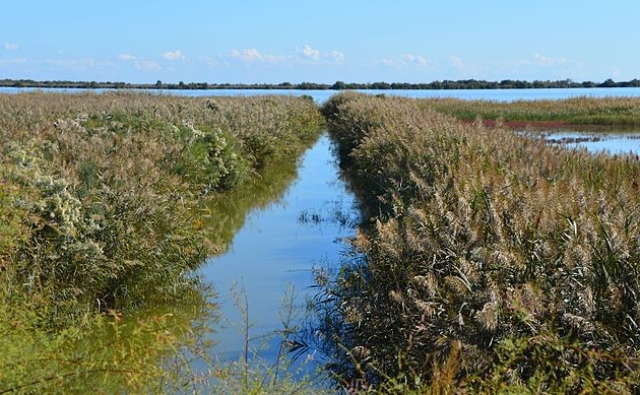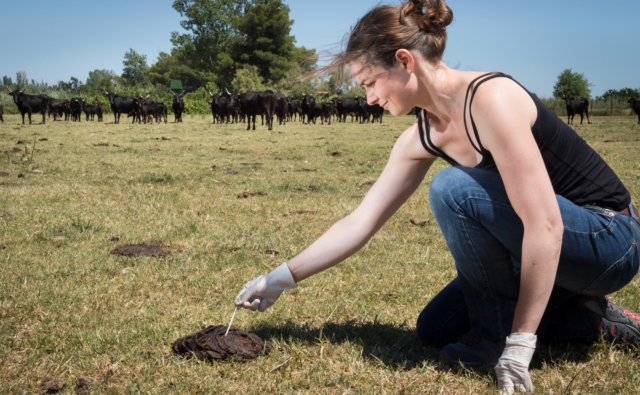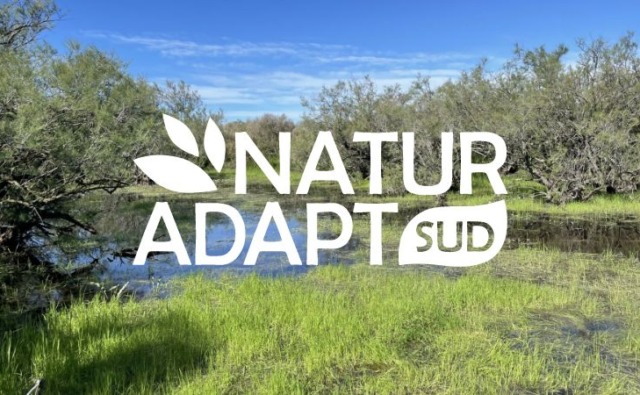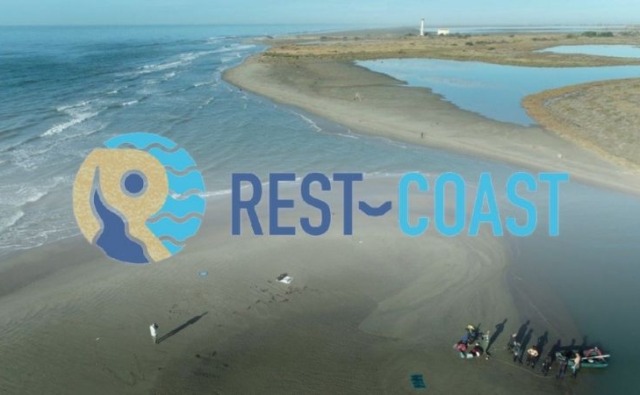Several doctoral students, co-supervised by the Tour du Valat over recent years, and who conducted part of their fieldwork here, successfully defended their theses in late 2018.
First of all, Émeline Sabourin defended her thesis (Fasciolosis dynamics in a highly anthropized environment—the Camargue) on 28 November 2018 in Montpellier (abstract). Her thesis completed in partnership with the MIVEGEC unit (Infectious Diseases and Vectors: Ecology, Genetics, Evolution and Control) (CNRS / IRD / University of Montpellier), falls within the framework of the Tour du Valat research programme on health ecology, and more specifically concerns Fasciolosis dynamics in the Camargue. Her research will make it possible to improve bovine health management and breeding in this area, in which the economic stakes are high for the “Camargue Bull” designation of origin.
Meanwhile, Élie Gaget, whose thesis was co-supervised by the Tour du Valat and the CESCO (ecology and conservation sciences centre) at the Muséum national d’histoire naturelle, defended his thesis (The importance of conservation policies for facilitating the adjustment of wintering waterbird communities to climate warming in the Mediterranean) on 10 December, 2018 in Paris (abstract). He conducted his research at the Tour du Valat within the Mediterranean Wetlands Observatory team, and in collaboration with Wetlands International, in the framework of research on the impact of human pressures on wintering waterbirds. You can view a film about his research below.
Cannelle Moinardeau, whose research was co-supervised by the Tour du Valat and the IMBE (Mediterranean Institute of Marine and Terrestrial Biodiversity and Ecology), defended her thesis in Avignon on 12 December, 2018. Entitled Is ecopastoralism a tool adapted for the conservation management of highly anthropized ecosystems? (abstract), it was completed in the framework of Tour du Valat research and projects on ecological restoration. Her research was conducted on the Donzère-Mondragon hunting and wildlife reserve, between the Drôme and the Vaucluse Departments. You can watch a film below in French, which shows the issues involved in her research.
Ana Paula Garcia Neto, whose thesis work was co-supervised by the Tour du Valat and Aix-Marseille University, defended her dissertation on 14 December in Aix-en-Provence. The subject of her study was Ecosystem services in the Mediterranean Basin (abstract), and her research was completed within the framework of the European research project called OPERAs, on which she worked at the Tour du Valat in collaboration with the Mediterranean Wetlands Observatory team (find out more).
Finally, Benjamin Folliot, whose research was co-supervised by the Tour du Valat and the National Office for Hunting and Wildlife (ONCFS), defended his thesis (The dynamics of exploited species: the case of the Common Pochard (Aythia ferina) in the Palaearctic) on 17 December, 2018 in Montpellier (abstract). His research falls within the scope of the long-term research and projects conducted by the Tour du Valat on ducks, geese, and swans (Anatidae) since its founding in 1954 (find out more).
Congratulations! All the best to all five of you for a successful future!
You will find below the abstracts of these five Ph.D. theses, as well as the contact information for the new postdocs.
Abstract of Émeline Sabourin’s thesis
Fasciola hepatica‘s dynamic in intensive anthropized system : la Camargue
The emergence and re-emergence of diseases encountered over the last hundred years represent a real health crisis largely due to anthropic disturbances that affect the ecosystems as well as the interactions between parasites and hosts. The prevention and control of emerging infectious diseases require an in-depth understanding of their dynamics in all the compartments in which they occur. Among these diseases, Fasciolosis is particularly sensitive to human related changes. This zoonosis caused by the parasite Fasciola hepatica, is commonly recognized as a veterinary problem and major public health issue in certain countries. Our study aims to understand the circulation dynamics and risks of fasciolosis emergence in a context of high anthropization. Our objective is (1) to study the dynamics of the intermediate host, a mollusc of the lymnaieidae family. (2) to understand the dynamics and diversity of the parasite between and within its different definitive host compartments. This work was carried out in the Camargue in the Tour du Valat estate, allowing us to have access to the definitive hosts, wild (nutria and wild boars), domestic (treated and untreated bulls) and the intermediate host, Galba truncatula. First, we characterized the habitats that are favorable to the intermediate host G. truncatula, presence in Camargue and we found that ponds appear to be areas of higher risk than irrigation channels for fasciolosis transmission. Then, we became interested in the influence of habitats on the dynamics of G. truncatula through population genetics approaches, our results showed that habitat permanence and connectivity influence the reproduction mode, population structure and dispersal of G. truncatula in the Camargue. In a second step, we studied the dynamics and circulation of the parasite within the definitive host compartment. Our results of the population genetic analyses of definitive hosts indicated that there were several transmission sites on our study area that constituted a single large global outbreak. In addition, the study of the circulation of the parasite between wildlife and domestic animals suggests the role of wild boars in the spread of the disease and the role of nutrias in maintaining the fasciolosis cycle. Our work highlights the value of long term studies and the importance of taking into account all the compartments involved to understand the epidemiology of a disease. They also emphasize the role of human activities and ecosystem in the dynamics of fasciolosis. The ultimate goal of this study is to propose integrated management measures adapted to the Camargue context in order to limit the health impact of fasciolosis and other livestock diseases in the region.
Contact: emeline.sabourin(at)gmail.com
Abstract of Élie Gaget’s thesis
Importance of the conservation policies for facilitate community adjustment to climate warming of the Mediterranean wintering waterbirds
Destruction/degradation are at the top of the list of factors responsible for biodiversity loss. Climate change is increasing in magnitude and adding additional pressure on species. In response to the increase in global temperatures, communities are changing as a result of the shift in the geographical distribution of species towards the poles. But the accumulation of anthropogenic pressures is likely to produce interaction effects that limit community adjustment to global warming. In this critical context, conservation biology aims to reconcile human activities with biodiversity conservation. In this thesis I have investigate how the accumulation of anthropogenic pressures can limit the adjustment of communities to global warming and to identify solutions that could be put in place to facilitate their adaptation to this warming. I have used the wintering waterbird species in the countries of the Mediterranean basin as a model for my study. These iconic species benefit from an international census to monitor their populations in response to hunting and the degradation of the wetlands on which they depend. The Mediterranean is a highly anthropized region where the use of natural resources exerts significant pressures on wetlands and their biodiversity. In response, countries have different strategies to protect these ecosystems, making this region an interesting experimental plan to measure the impact in global changes on species assemblage based on conservation measures implemented. By studying the response of communities to global warming under a gradient of habitat loss/degradation, I show that community adjustment is reduced or even prevented by wetland degradation. The Ramsar Convention aims to protect wetlands and their biodiversity by maintaining a rational use of natural resources. In assessing the effect of this convention, I show that its effectiveness in conserving bird populations depends on the implementation of other protection tools, but that its role is crucial in countries where environmental legislation is weak. Finally, I assess the capacity of international conventions to facilitate community adjustment to global warming by reducing population pressures. I compared the communities’ response between countries that have ratified the Bern Convention, those that have started its strictly regulatory application under the Birds Directive (European Union) and those that have not ratified these conventions. The result is clear, the more precise and strictly regulatory the regulations, the more communities and strictly protected species adjust to the increase in temperatures. In conclusion, human activities are a threat to biodiversity, but conservation measures, by reducing pressures on populations, facilitate their adaptation to climate change. Waterbird conservation requires international collaboration and the establishment of strictly regulatory laws to protect wetlands and species, while ensuring sustainable use of resources.
Contact: elie.gaget(at)gmail.com
Abstract of Cannelle Moinardeau’s thesis
Ecograzing, a tool adapted for the conservation of highly anthropised ecosystems? : The case of the artificial dykes of the Donzère-Mondragon canal in the Rhône valley (Vaucluse-Drôme, France)
The main objective of the thesis was to characterize the impacts of different types of pastoral management (cattle, horses, goats) on “new ecosystems” plant communities. Our experimentations were conducted in highly anthropized dykes and embankments of the Donzère-Mondragon reserve in the lower Rhone valley. Various tools were used (i.e. vegetation surveys, soil analyzes, grassland mineral analyzes, remote sensing, GIS, etc.), and at different spatial scales in order to identify the interrelationships between the different levels of vegetation organization and functions. Indeed, the emergence of “new ecosystems” requires managers to reconsider the initial principles of conservation management. Our study showed that, in the short term (3-5 years), grazing systems using herds of herbivores, whose organization is adapted to maintain open habitats, increase species richness, diversity and heterogeneity of plant communities compared to lack of management or mechanical interventions. Moreover, the annual species that appear are appetizing and contribute to increase the forage value of the site grazed by horses. These herbivores also have an impact on the permanent seed bank by increasing both its heterogeneity and the density of viable seeds under the most grazed patches. Grazing of cattle and horses confirm a correlation between the vegetation index (NDVI), biomass and plant species richness. Finally, we evaluated the efficacy of goats’ action on bramble via consumption indices calculated using GIS. Our different results are in the line with those already obtained in natural environments. Future experiments should test the effects of mixed grazing systems, particularly cattle, goats and horses, on the colonization dynamic of competitive shrubs such as brambles. Applied pastoral management should be considered in the medium term, via multi-year contracts to promote the sustainability of this management method and its effects over time.
Contact: cannelle.moinardeau(at)gmail.com
Abstract of Ana Paula Garcia Neto’s thesis
Ecosystem services in the Mediterranean basin
Global change, through the impact of human activities on the processes that regulate the functioning of the Earth system, poses important challenges to society. The acceleration of human pressures during the last decades has had profound impacts on Mediterranean socio-ecological systems including the reduction of important contributions from nature to human well-being, referred to as ecosystem services (ES). For the coming decades, there is growing concern about how pressures of social-ecological systems, in particular urbanization, land management practices and nature conservation policies, will affect the supply of ES in the Mediterranean Basin and how the associated vulnerabilities could be reduced. Sustainable supply of ES is a key prerequisite to the achievement of many Sustainable Development Goals (SDGs), but knowledge on how this could best be achieved is sparse, in the Mediterranean Basin but also elsewhere. This lack of knowledge is not confined to issues of scientific understanding, but also to the fact that research efforts are more lim-ited in Northern African countries as compared to Europe. There is a particular need to elucidate trends, trade-offs and synergies between ES under the influence of pressures and management in the wider Medi-terranean basin. The main goal of this thesis is to analyze how ES flows in the Mediterranean Basin area, and the trade-offs between them, are affected by drivers of change. To this end, a multidisciplinary assessment perspective – from biophysical to socio-cultural factors, covering multiple spatial scales from the local to the Mediterrane-an Basin – has been used to analyze changes in ES supply and demand. The core results are presented on three independent studies. In the first one (chapter 2.1) I assess land cover and ES capacity supply trends in Mediterranean peri-urban areas due to urbanization using spatial open data sources. In the second sub-chapter (2.2), I present a literature review to identify the impact of conservative management practices on ES. In the third subchapter (2.3), I explore the impact of the role of stakeholders in environmental manage-ment decisions on their perception of ES patterns using collaborative mapping workshops. In the peri-urban zones around 12 Mediterranean cities I found a general decrease in the overall capacity to supply ES due to land cover changes (1990 2016) (chapter 2.1). In the European peri-urban areas, expan-sion of the urban surface has occurred at expense of agricultural land loss, whereas in North African experi-enced an increase of irrigated agricultural land. In chapter 2.2, a selection of alternative management op-tions positively impacts the supply of regulating ES in Mediterranean agro-ecosystems. In contrast, crop yield was increased using management options such as no tillage and mulching, but decreased under mulching among others. Chapter 2.3 demonstrated that the spatial scale of influence of stakeholders on ES manage-ment affects the recognition of contributions from specific or wider landscape elements (e.g. protected are-as) to ES supply. The revealed impacts of urbanization and commonly applied agricultural management systems negatively impact the supply of ES which may hinder the progress Mediterranean countries strive for within the frame of the SDGs. Better management of land use systems along the rural-urban gradient and the engagement of stakeholders could help to assure progress towards the SDGs. The chosen methods and data affect the re-sults with regards to ES trends, synergies and trade-offs detected. In this thesis I recognize the need to apply integrated ES assessment to provide the estimation of trends, and the existence of shared knowledge within stakeholder groups that can provide the much needed link between theory and practice. This thesis evi-dence that the inclusion of diverse dimensions of the social-ecological systems can improve the understand-ing of ES flows and changes therein.
Contact: ana.garcia(at)imbe.fr
Abstract of Benjamin Folliot’s thesis
Demography of exploited populations : the case of the Common Pochard (Aythya ferina) in Palearctic
The Common Pochard (Aythya ferina) is a regular diving duck species in the western Palearctic. However, a worrisome decline of its wintering population led to an up-listed IUCN status from “Least Concern” to “Vulnerable”. This species is still hunted in Europe despite this decline. Hence, one may wonder about the sustainability of its harvest. The aim of this work was to understand the population dynamics of this species, and the drivers of these mechanisms. For this purpose, we assessed the declining trend in northwestern Europe using the mid-january censuses. Then, we studied the migratory connectivity with the two others flyways, in order to better understand the origin of the decline. Finally, we assessed two main demographic parameters (survival rate and nesting success) and combined these into a matrix population model. This model allowed us to assess an asymptotic growth rate and to determine the key demographic parameters on which management actions should focus. The main results of this thesis indicate that the decrease in productivty in Europe and in Russia could have been the main reason of the decline. However, given the limited human action to improve Pochard productivity, only breeding habitat improvement could be considered. Such improvements could be easily considered in Europe, but not in Siberia, the main breeding region characterized by a large area and a strong geographic isolation. Survival rates were lower in France than in neighbouring countries, possibly owing to a greater hunting pressure. A more moderate hunting pressure could lead to higher survival rates, and a balanced growth rate. Setting up an adaptative harvest management scheme could help reaching defined management goals, by annually adapting hunting quotas to current knowledge and assessment of Pochard population size.
Contact: benjamin.folliot(at)gmail.com



